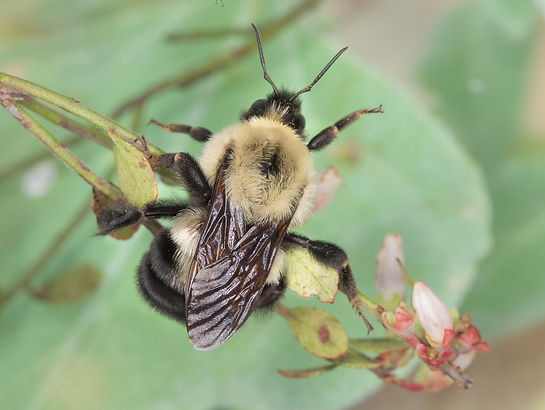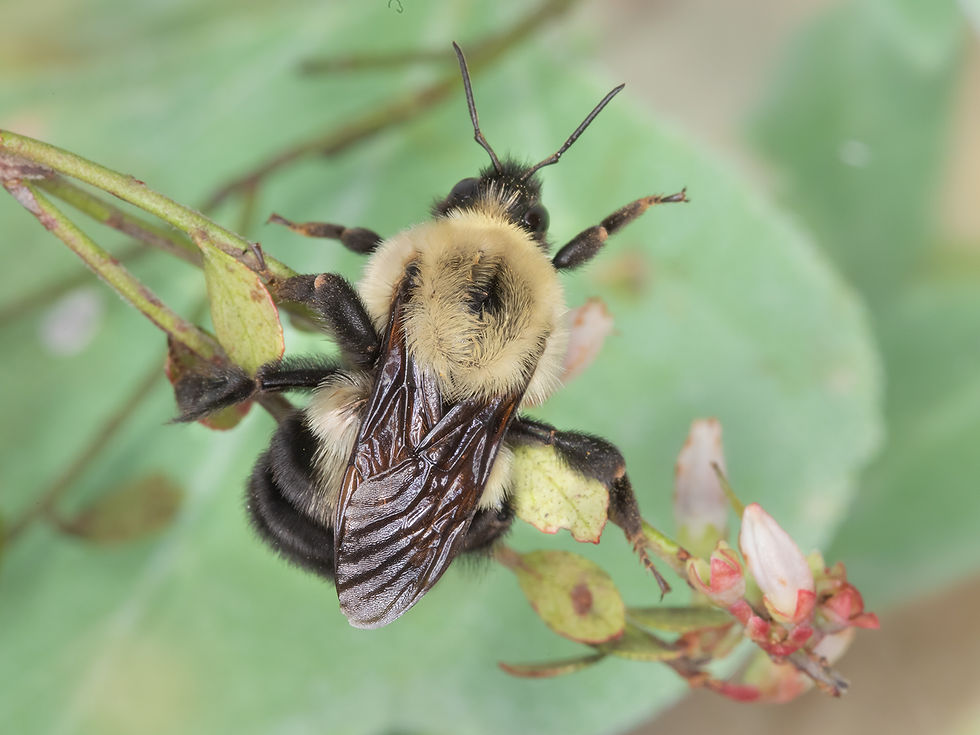SHARP-EATMAN
NATURE
PHOTOGRAPHY
ID GUIDE TO FLORIDA NATIVE BEES
ID PAge F - #B8

BUMBLE BEES
Bombus
Two-spotted Bumblebee
Bombus bimaculatus
Family: Apidae
Size: 21 mm (queen)
Food plant:
Shiny blueberry
(Vaccinium myrsinites)
in Coastal pine woods / scrubland.
February 14, 2021
St. Augustine, FL

A female Bombus bimaculatus

A queen two-spotted bumble bee

Dorsal view of queen bee

Lateral view of bee

Alternate view of queen
This ID was affirmed by Ascher here: https://www.inaturalist.org/observations/69616872
with this info: Queen Bombus bimaculatus (two-spotted bumblebee) - 21 cm. Out at very beginning of spring here in North Florida, in first days of blueberry bloom. Long, uneven yellowish hair on thorax, yellow hairs in the middle of the second segment of the abdomen (T2), and long space between compound eye and jaw. Feeding on shiny blueberry (Vaccinium myrsinites) in coastal pine woods / scrubland. Female workers emerge later in the spring here (not early February) and are smaller.
Southern Plains Bumblebee
Bombus fraternus
Family: Apidae
Size: 27-28 mm (queen)
ENDANGERED
Food plant:
Horsemint / Spotted bee balm
(Monarda punctata)
near coastal sand dunes
August 29, 2020
Flagler Beach, Fla

A female Bombus fraternus

A bombus fraternus queen

Dorsal view of bee

The broad black bar on the thorax, between the wings, is characteristic of the species

Close-up of thorax
This ID was affirmed by Ascher at I-Nat here: https://www.inaturalist.org/observations/61614834
And confirmed at bug guide (https://bugguide.net/node/view/1884419).
The large size (27-28 mm) and time of year indicate that this is a queen. Note black bar on otherwise yellow-haired thorax. Yellow hairs on first two segments of abdomen; black hairs on third through sixth. Face black, and hairs on and behind face are also black.
Submitted to Bug guide with this info: Flagler Beach, Flagler County, Florida, USA
August 29, 2020, Size: 27-28 mm. Bombus fraternus found feeding on horsemint (Monarda punctata) near coastal dunes. Very large bee -- 27-28 mm, so probably a queen?
According to bug guide: Identification: Black interalar band broad and well defined. T3 black (as opposed to yellow in auricomus and sonorus). T2 entirely yellow-tan (lacking the black apicolateral corners typical of griseocollis). see detailed description of queen and male at discoverlife.org